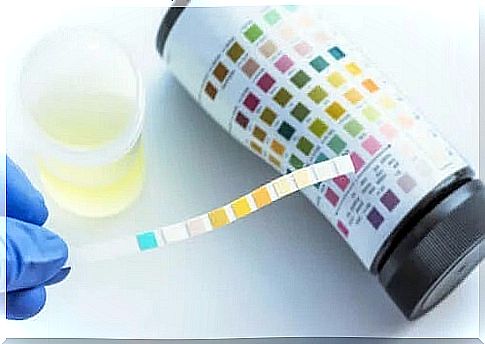What Can Be Detected By Urine Analysis?

Urine analysis is a diagnostic test that medical professionals use to detect different types of health disorders. In this analysis, the specialist examines the appearance, concentration and content of urine. The results may suggest the presence of a disease. The doctor will then confirm the diagnosis by other methods. So what can be detected by urine analysis?
It is important to note that a urine test alone does not provide a definitive diagnosis. In fact, the doctor must interpret the implications of the results. These types of tests are performed to determine the presence of a disorder, but also to prevent or track the progression of a disease.
Urine analysis detects substances that the body cannot retain or need to eliminate. With just 10 milliliters of urine, a specialist can get evidence of several diseases (for example, diabetes, multiple myeloma and kidney failure).
When do doctors ask for urine tests?

- Uroscopy. This consists of visually analyzing the appearance of urine. Color, turbidity and odor provide important, albeit inconclusive, data.
- Test strips. This test consists of pouring a small amount of urine on a special strip that has certain chemical components. These bands react in the presence of certain substances in the urine and change their color.
- Urine sediment. This process takes place in a laboratory and consists, first of all, in separating the liquids from the solid elements in the urine. The latter are then examined under a microscope to determine if there are any particles or cellular elements.
- Biochemical study. This test is also performed in a laboratory and allows the specialist to observe if there are certain substances or elements that may indicate the presence of a disease. It is a complex analysis that medical professionals perform through special biochemical techniques.
- Microbiological study. This test is able to determine if there is an infection and identify the germ that causes it.
What can be detected by urine analysis?

The following is an initial test with a test strip. When the specialist applies a small urine sample to a test strip, it does not change color if the urine is normal or changes color if there is a substance that should not be present.
This tool detects:
- Acidity or pH. If it is abnormal, it may indicate urinary tract or kidney problems.
- Density. High density is a symptom of dehydration.
- Proteins. Elevated protein levels indicate kidney problems.
- Glucose. If the urine contains glucose, it may indicate the presence of diabetes.
- Ketone bodies. They also indicate the presence of diabetes, especially in case of decompensations that could be serious.
- Bilirubin. Its presence suggests the possibility of liver disease or liver damage.
- The blood. It can be a sign of infection, kidney damage, kidney stones or cancer of the kidneys or bladder. It is a sign that needs complementary methods to establish a diagnosis.
- Nitrites or leukocytes esterase. Suggests an infection.









